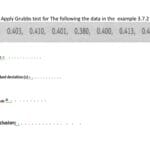The year 2024 marked a pivotal moment in neuroscience with the introduction of the NeurIPS Datasets and Benchmarks Track. This initiative underscores the growing recognition of the crucial role of robust data and standardized evaluation in advancing our understanding of the brain. This article delves into the significance of this track, explores key contributions, and discusses the future implications for neuroscience research.
NeurIPS 2024: Setting the Stage for Data-Driven Neuroscience
The inaugural NeurIPS 2024 Datasets and Benchmarks Track signaled a critical shift towards rigorous evaluation and open-source collaboration in neuroscience. With abstract submissions due by May 29, 2024, and camera-ready versions by October 30, 2024, the track utilized OpenReview (https://openreview.net/.https://www.lolaapp.com/2024/Datasets_and_Benchmarks_Track) to manage submissions, fostering transparency and community involvement. This emphasis on open science practices, encouraging open-source libraries and tools, further solidified the track’s commitment to collaborative progress. The track specifically called for frameworks for responsible dataset development, audits of existing datasets, identification of problems with those datasets, and benchmarks on new or existing datasets (https://neurips.cc/Conferences/2024/CallForDatasetsBenchmarks). The acceptance rate for the track stood at approximately 36%, suggesting a rigorous selection process focused on high-quality contributions.
Pushing the Boundaries of Neuroscience Data
The NeurIPS 2024 track showcased a diverse range of datasets, including a novel contribution focused on continuous PPG (photoplethysmography) recordings from wearable sensors. This dataset, featuring data from 16 participants over 13.5 hours (https://neurips.cc/virtual/2024/events/datasets-benchmarks-2024), offers a unique opportunity to explore brain-body interactions. Such continuous physiological recordings represent an important trend, potentially enabling new insights into the dynamic interplay between the brain and the body’s peripheral systems. This, coupled with access provided by resources like the NSTAT toolbox (a collection of over 1,000+ datasets and benchmarks) and the NMT Canvas (a platform for exploring and accessing these datasets), equips researchers with powerful tools for discovery.
Beyond NeurIPS: Broader Trends in Benchmarking
The push for standardized evaluation extends beyond NeurIPS. Initiatives like the Neural Latents Benchmark ’21 provide a comprehensive suite of tools for evaluating latent variable modeling of neural population activity across diverse brain areas involved in cognitive, sensory, and motor functions (https://openreview.net/forum?id=KVMS3fl4Rsv). Furthermore, the development of “gold standard” datasets using simultaneous extracellular and intracellular recordings promises to significantly improve the accuracy of neuronal activity evaluation. A notable publication in Nature (February 29, 2024), “Open datasets and code for multi-scale relations on structure, function and neuro-genetics in the human brain,” further emphasizes the growing commitment to open data sharing and collaborative research in neuroscience. These combined efforts are paving the way for more comparable and reproducible research in computational neuroscience.
The Future of Neuroscience: Towards More Rigorous and Reproducible Research
The increasing focus on high-quality datasets and standardized benchmarks represents a crucial step toward enhancing rigor and reproducibility in neuroscience research. While the NeurIPS 2024 track provided a vital platform for showcasing these advancements, it also highlighted the challenges that lie ahead. These include data standardization, ensuring participant privacy, and addressing the computational demands of analyzing increasingly complex datasets. Future directions may involve incorporating diverse data modalities, such as neuroimaging and genetics, and developing more sophisticated evaluation metrics. Furthermore, community-driven efforts, facilitated by platforms like OpenReview, will likely play a critical role in curating and validating these resources. Addressing the ethical implications of using large neuroscience datasets, especially those involving human subjects, will also be paramount.
Dataset vs. Benchmark: A Crucial Distinction
Understanding the difference between a dataset and a benchmark is fundamental. A dataset is simply a collection of data points – the raw material for analysis. A benchmark, on the other hand, is a standardized evaluation tool used to assess the performance of different models or algorithms. Just as a ruler measures length, a benchmark provides a means of quantifying the accuracy, efficiency, or other relevant characteristics of a model. Datasets and benchmarks are intrinsically linked. Datasets are essential for developing and testing benchmarks, while benchmarks, in turn, help researchers evaluate the quality and suitability of different datasets.
Connecting with NeurIPS
For inquiries related to the NeurIPS 2024 Datasets and Benchmarks track, researchers can contact [email protected]. For human resources-related questions, [email protected] or 858-208-3810 are the designated contact points. For all other inquiries, the official NeurIPS website (neurips.cc) serves as the central resource.
The NeurIPS 2024 Datasets and Benchmarks Track signifies a significant leap forward for neuroscience. By fostering open collaboration, rigorous evaluation, and the development of high-quality resources, this initiative paves the way for a future of more robust and impactful discoveries in our quest to unravel the complexities of the brain.
- Unlocking Francis Alexander Shields’ Finance Empire: A Comprehensive Biography - July 12, 2025
- Unveiling Francis Alexander Shields: A Business Legacy - July 12, 2025
- Francis Alexander Shields’ Business Career: A Comprehensive Overview - July 12, 2025















